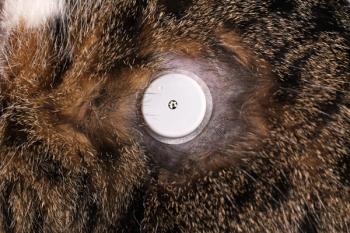
Diabetes mellitus: What is it and how is it diagnosed?
The more you know diabetes mellitus, the better you'll be able to educate your clients and ensure affected pets are receiving proper treatment.
The more you know diabetes mellitus, the better you'll be able to educate your clients and ensure affected pets are receiving proper treatment. Here's a brief overview of this disease and how it is managed.
What is diabetes mellitus?
The literal translation of diabetes mellitus is sweet urine, which explains a lot considering the process that occurs within the body of a diabetic pet. Diabetes mellitus arises when the pancreas doesn't produce enough insulin or the insulin is ineffective. Insulin is a hormone produced by the pancreatic beta cells and is necessary to move glucose from the blood into cells where it is the main source of energy. Both insulin deficiency and insulin resistance result in high concentrations of glucose in the blood since the cells are unable to use it. The cells making up the tissues and organs of the body are starving. When blood glucose concentrations get high enough, a critical renal threshold is reached, and glucose will spill into the urine, hence the name sweet urine.
Diabetes differs in dogs and cats. Dogs develop Type 1, or insulin-dependent, diabetes. Cats develop Type 2 diabetes, similar to adult-onset diabetes in people. This is called non-insulin-dependent diabetes. For many cats with diabetes, eliminating the cause of the insulin resistance and treating the diabetes early with insulin can result in remission of the diabetes. The No. 1 cause of insulin resistance in cats is obesity.
How diabetes is diagnosed
The signs of diabetes in dogs and cats are not always easy for owners to identify. Diabetic pets will be drinking a lot (polydipsia), urinating a lot (polyuria), and eating a lot (polyphagia). However, owners may not notice this unless their pets begin to urinate inappropriately in the house or unless they are paying close attention to a litter pan. Dogs with uncontrolled diabetes are at high risk for developing cataracts, which may be the first sign for owners, and cats may present with a peripheral neuropathy.
Veterinarians typically diagnose diabetes by finding an abnormally high concentration of glucose in the blood (hyperglycemia) and in the urine (glycosuria). Diabetic pets often have concurrent diseases, so a complete blood count and serum chemistry profile, as well as urinalysis and a urine culture, should be performed to evaluate for urinary tract infections and changes in hepatic and renal function. One note about cats: Stress hyperglycemia occurs frequently in cats at the clinic. These cats will have high blood glucose measurements, so it can be difficult to differentiate hyperglycemia due to diabetes from transitory stress hyperglycemia. A measurement of serum fructosamine, a protein bound to glucose, will give you an idea of what the average blood glucose was over the past couple of weeks. Blood samples can be drawn for fructosamine concentrations at any time. Patients do not have to be fasted (but they can be), and the time of insulin administrations does not interfere with the results.
Ketoacidosis
Patients with an absolute shortage of insulin will become ketoacidotic. If diabetes is not controlled, eventually the body will begin to breakdown fats for energy. A by-product of this process is ketones. Patients with ketoacidosis are commonly emergency cases and present dehydrated, anorectic, vomiting, and depressed. Treatment for this presentation varies as these patients must first be stabilized with supportive care and treated with fast-acting insulin until they are out of crisis.
Treating diabetes—beyond insulin
The goals of diabetes treatment are to eliminate clinical signs, maintain an optimal body condition, and prevent persistent hyperglycemia or hypoglycemia. Giving daily insulin injections is a common part of treatment (see
You should also discuss with owners the level of exercise their pet is used to and how insulin is affected (heavy exercise reduces the amount of insulin required by the body). Gradually increasing exercise as the pet's body condition improves will help prevent hypoglycemia and may lower insulin dose requirements over time. Technicians should briefly reinforce the importance of updates in drastic changes in exercise level.
Robin Sereno, BS, CVT, VTS (SAIM), is the nursing coordinator and supervisor for the Small Animal Internal Medicine Service at the University of Wisconsin Veterinary Medical Teaching Hospital in Madison, Wis.
Newsletter
From exam room tips to practice management insights, get trusted veterinary news delivered straight to your inbox—subscribe to dvm360.






